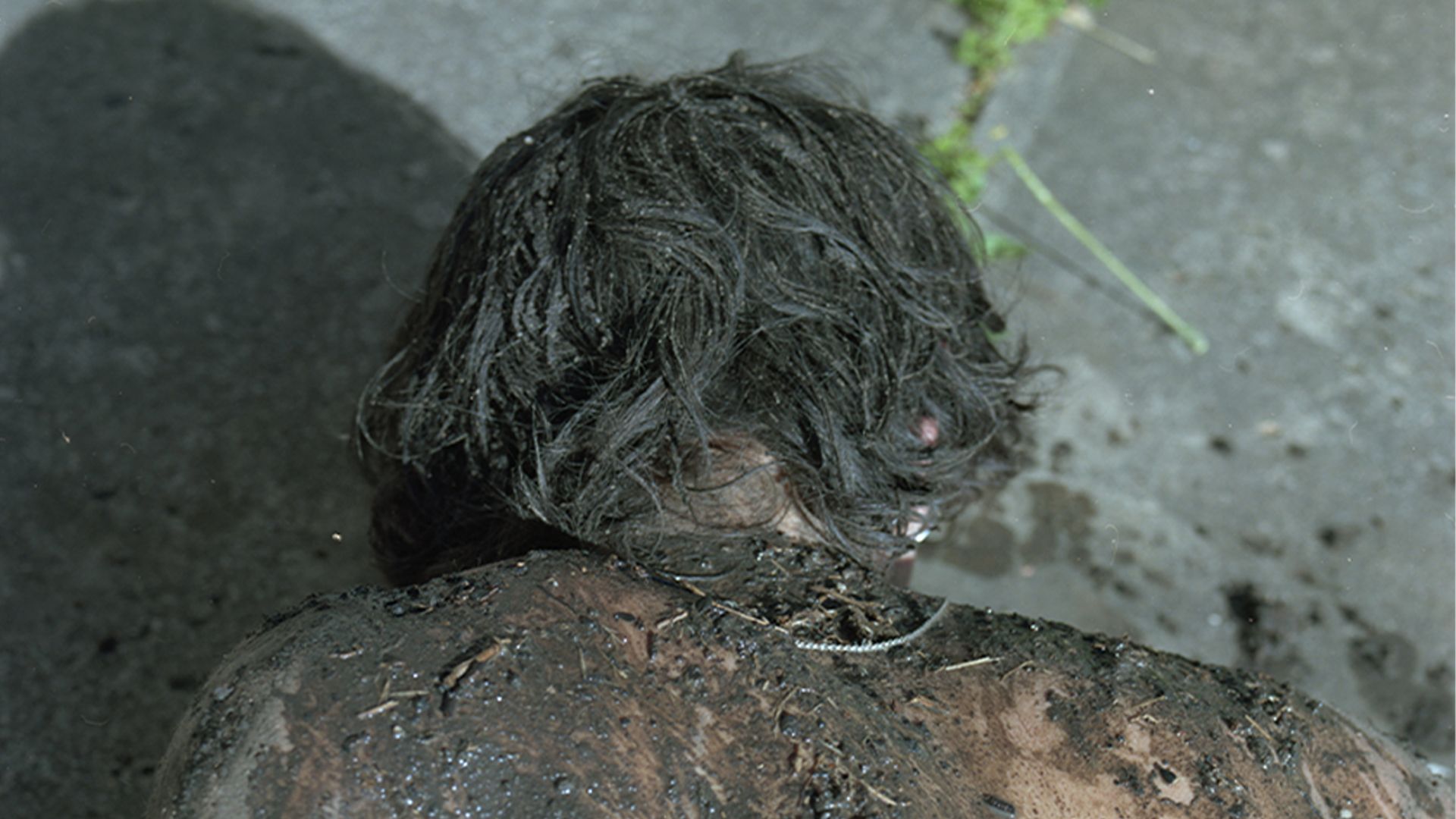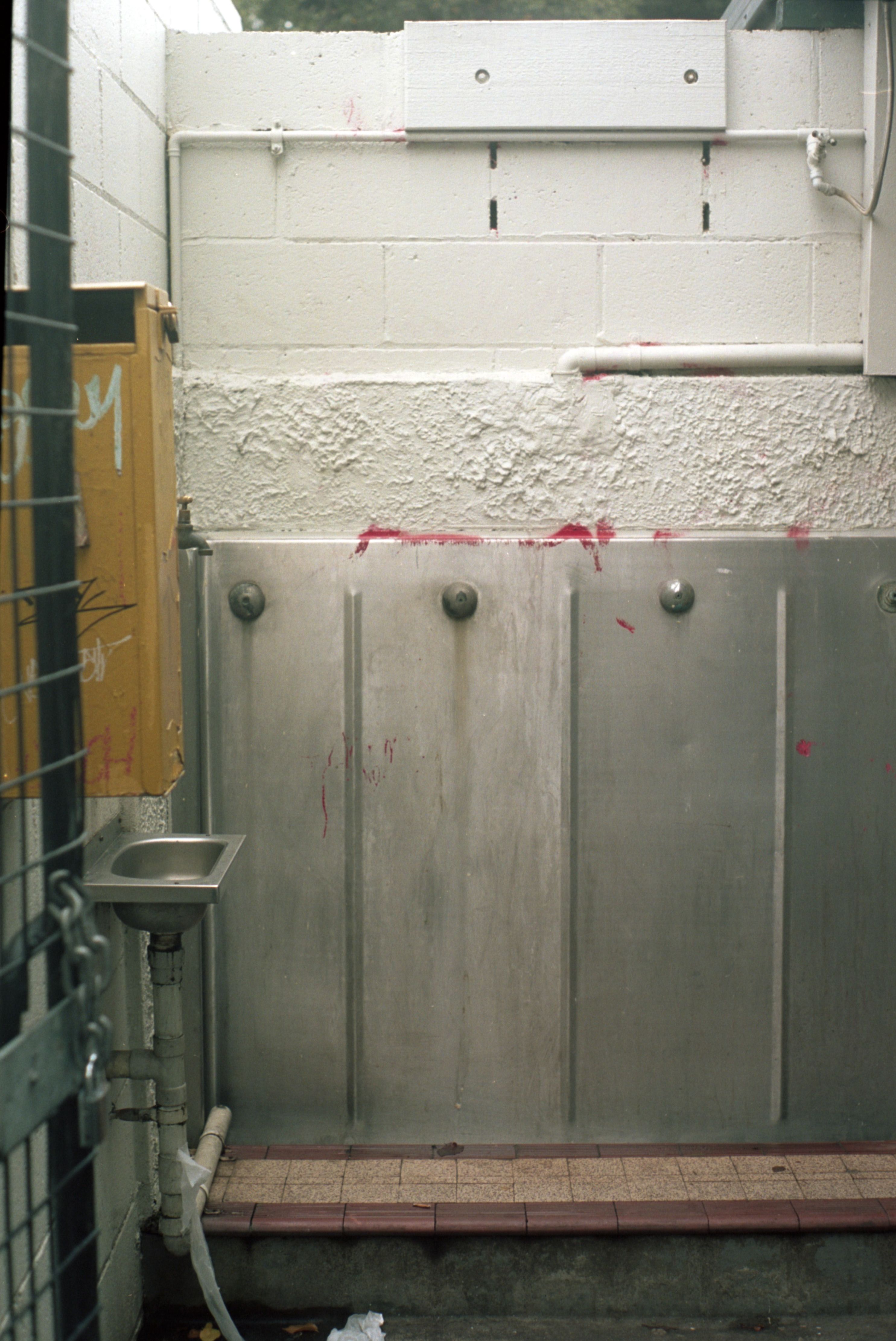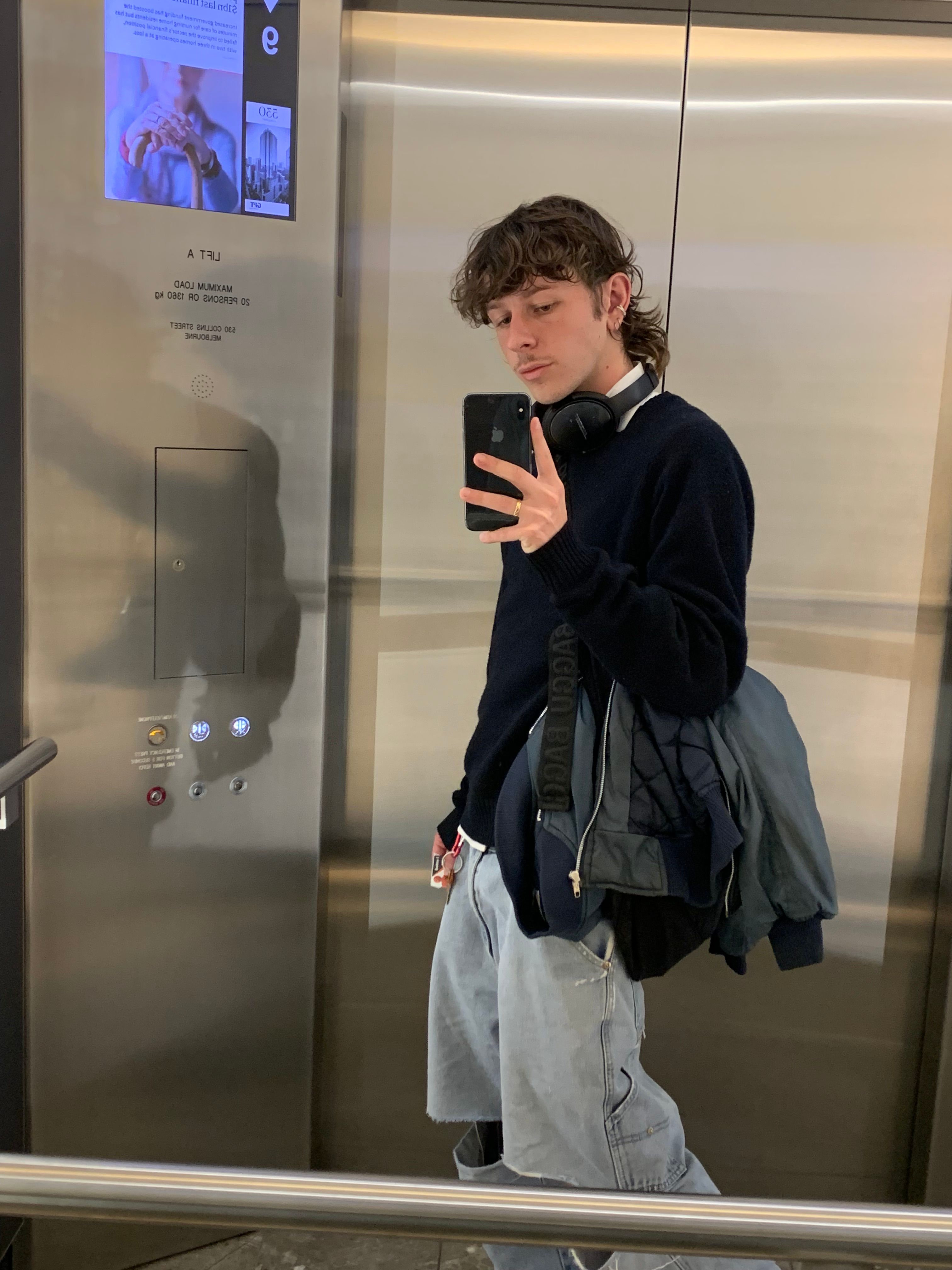Waterlilies Sucking Mud
Is cruising a form of time travel, a doorway into a pocket of Queer time, or something else entirely? Tom Denize unpacks the heat and magnetism of cruising spots.
The first time I cruised didn’t feel real, it felt like some forgotten fantasy I had created many summers ago. On the cusp of turning 18, I spent two months living in London with a high-school friend. I was in my first year of uni in Aotearoa and she was finishing high school. M’s house was on the Vale of Health, a street that led directly into Hampstead Heath – cutting through the Heath and back onto the main road by Whitestone Pond was the easiest way to and from from the bus stop closest to her house. That afternoon, I think I was on my way to meet M and some of her friends for a pint. The summer was viscous and blurry, I was in an unfamiliar, inconceivably large place, and – for the most part – anonymous and able to be whoever I wanted.
I saw obvious clues as to what went on there – empty amyl bottles, stray used condoms and tissues strewn on the sides of the path.
Cruising areas often hold something thick and layered; indescribable and subtle but impossible not to notice. Something like an opaque veneer that only becomes visible in the right light, like a car door in the sun flashing a strange reflection at you. The West Heath was like this. A shifting lapse in reality to dip in and out of. Once within, time, place and body become malleable and shifting. Being a young, inexperienced, Gen Z gay man, I had no clue what cruising was, but walking those paths felt rousing and awry. Something lingered there. I was on my way to the bus stop, and maybe it was the heat or something about the magnetism that day but I kept walking, past the bus stop and into the West Heath. Following the path deeper into the Heath, I saw obvious clues as to what went on there – empty amyl bottles, stray used condoms and tissues strewn on the sides of the path. It was late afternoon and after a few minutes of walking I saw various men intersect, pair up and walk off. The parameters of the situation I now found myself in became clear, and I kept walking. I told myself I was purely there as an observer, just to see what was going on. I watched men do their dance together on the paths ahead, a lingering glance over the shoulder, a soft beckoning to follow, an initial contact. What happened next is where I’m unsure of the truth. A guy whose face I can no longer remember was staring at me. I gave myself permission to approach. We didn’t talk, he gestured for me to follow, we found a tree to lean up against and performed oral sex on each other, he came, I left. I don’t know what lie I told M as to why I was late.
Desire can be a propelling force, a possession. Feeling the curvatures of this desire shapeshift within you can be a terrifying but also a pleasurable rush, a quiet rupture/rapture: in who you think you are and the eventual rapturous departure from that. It is insatiably liberating to submit to, allowing it to stir and move you. I remember feeling entirely unlike myself and more like myself than I maybe ever had. There’s a plurality and contradiction in this dance. Being in the Heath that afternoon felt like stumbling across a profound and salacious secret I didn’t quite have the words for, but also refused to talk about, out of shame more than anything. I felt like an indecent, dirty fag, even amongst other gay men. It became a memory I locked away somewhere, out of shame; in my recollection, the truth of what happened and how shame has potentially warped my memory have become indiscernible.
Location is the key to respectability, it’s like cocaine in the boardroom and the needle of the streets. But for those who know, the alfresco fuck is the original fuck. Didn’t the Garden of Eden come before the house which hid our nakedness? Sex on the Heath is an idyll pre-fall. Did Adam masturbate until God hacked out his rib to create Eve?
— Derek Jarman, 1993
‘Cruising’ is potentially derived from the 17th-century Dutch word ‘kruisen’, meaning ‘to cross’. I enjoy the serendipity in other etymological facets of this word. Cross my heart as a vow. Crossing over as a euphemism for dying. To cross someone’s path. To cross someone’s mind. The Oxford English Dictionary states contemporary (non-sexual) cruising as the action of sailing about in an area without a precise destination, especially for pleasure. Historically, cruising was birthed out of necessity, during a time when Queer identities still existed in the margins of a society that actively discriminated against them. It provided a space where one could meet others like oneself while still having the safety of anonymity and avoiding the oppressive forces of the outside world. But now, in places like London, places where being Queer no longer places you exclusively in the margins, you would assume that the function of these spaces would be obsolete, yet they persist. I don’t mean to suggest that cruising experiences are singular or monolithic by any means. As curator and writer Tommaso Speretta puts it in Cruising Curating, cruising is something that deals with “multiple singularities over singular multiplicities and seeks to create the conditions for multiple subjectivities to emerge and co-exist.” By which meaning, my singularity is not the singularity. Cruising areas provide myriad necessary functions for people of different intersections of Queerness. It can be a space to work, a space to explore Queer sex when it is not safe elsewhere, a space for kink. What I’m curious about is what of Queer people like myself: if the conditions that would push us to cruise aren’t there, why do we still partake when there are ‘better’ options? Is it the itch it scratches? And if so, what is that itch?
It can be a space to work, a space to explore Queer sex when it is not safe elsewhere, a space for kink.
I suppose Queerness is something that constantly contends with the perceived and lived self, so perhaps what cruising spaces have become (for some) may just be a testing ground for that. A rehearsal room behind the stage. A primed space to play with your perceived self and the subsequent enactment of who you choose to become in that moment. It’s a confrontation with our liminality, and a necessary one. Queer life is a series of constant and continual beginnings, and inversely, constant endings. Always in flux, in a state of becoming. These encounters in public space are an oscillation of fractured beginnings and endings.
Photograph: Tom Denize
The feelings I associate with this conceptual space and the physical space itself are intermingled, braided together. The stage this happens on is important. There’s a reason I’m talking about public cruising and not online cruising. Both reach similar conclusions, just through different means. But the baggage and nuances of the online grids on Grindr, Sniffies or Scruff don’t seem pertinent. Instead, what grips me is the concealed yet entirely visible nature of cruising spaces. Michel Foucault’s theory of heterotopia explores the idea of worlds that exist between our reality and a utopia, confined by the laws and rules of our reality, a pocket world within our own. A placeless place. A place where the laws of the outside world can become pliable and elastic. I can experience my body in a different way here; the distinctions between You and Me become porous, and the proverbial Us becomes expansive and encompassing. Poet Anne Carson speaks to the idea that the self forms along the scalloped and misshapen edges of desire, but being here pushes those edges I’ve perceived previously to be rigid or fixed. When ‘here’, my perceived self crumples and expands. It runs ahead of me through the trees in the park, sometimes leaving me behind completely. In that absence, I can make a choice of who I wish to be. Having this sort of agency over the self, even if only momentarily, is intoxicating. Cruising spaces, being neither here nor there, are perfect ground for this expansion. My self empties. I become opaque here. The street lamps shine through this opaque vestige and I can then see it reflected or refracted through who I meet. Watch it shift as it reflects unto the other.
When ‘here’, my perceived self crumples and expands. It runs ahead of me through the trees in the park, sometimes leaving me behind completely.
When I immigrated to Melbourne, my first time cruising had become a faraway memory I’m not entirely sure was real in the first place. I hadn’t cruised since. I had yet to reconcile the shame I still held close to that experience. Not long after moving, I was walking home after work through Alma Park and felt that same heavy thickness I had felt in the Heath. In the coming weeks, I began to frequent the park, making observations at various times of the day and night. The smell of the toilet block at the entrance to the park, the small room cut into the bamboo hedge, and the street-lamp light shifting the space beyond the paved pathway. I continued doing this until I permitted myself to participate. Despite my shame, I belong here, or at least a part of me does, and because of that, I can ask myself why I do. Sometimes it’s easy for me (being Gen Z) to forget the generation lost during the HIV crisis, so there is often an implicit mourning in cruising – it’s a practice experienced by my forebears, and I mourn their lives, the ones I know about and all the ones I don’t. By engaging with this historical continued event, by cruising, I’m satiating a part of Queer past and also Queer present/future. Being here can be a way to transgress the conventions of time; it’s a dance, it’s tradition, it’s ritual. I recently talked to a friend who said it feels “almost ancestral.” I suppose it is – I’m always walking in the light of this past and cruising is a reminder of that.
By engaging with this historical continued event, by cruising, I’m satiating a part of Queer past and also Queer present/future.
When existing inside of a Queer temporality, past, present and future run concurrently with each other, not separately. In Mckenzie Wark’s text Raving, she speaks to Queer time as existing on a continuum separate from “(colonial) historic time”, not negating it but temporarily puncturing through it. To further conceptualise and understand a Queer mode of time, it’s worth mentioning its shortcomings. This mode is not a pervasive way of existing, this temporality can only be accessed in certain places. Felt under specific conditions that allow it to flourish. Queer time does not exist as an answer to the dominance of ‘Western time’, rather, it is beholden to it as a means of relief, a salve. Queer time can be a momentary breakdown of dominant structures, but not a complete dismantling. It’s in this way that it becomes distinct from other cyclical, non-linear understandings of time that exist in various non-Western and Indigenous frameworks; these exist beyond Western time, not in spite of it. As Steven Pile states in Opposition, Political Identities, and Spaces of Resistance, “There is never one geography of authority and there is never one geography of resistance. Further, the map of resistance is not simply the underside of the map of domination – if only because each is a lie to the other, and each gives the lie to the other.”
Queer time can be a momentary breakdown of dominant structures, but not a complete dismantling.
The theory around Queer time is still new and burgeoning, it often asks more questions than it answers, but with an acknowledging of limits, we can start imagining new possibilities beyond these. What would it mean for Queer time to be felt beyond the spaces I’m ascribing it to? Are there ways we can take it with us more pertinently when we leave these spaces? Or is there sanctity in its limits? These are questions that I don’t yet have answers for. For now, what I can speak to is that, on entering a cruising space, the walls of past, present and future momentarily break down and a crossing between people, love, ecstasy and experience rushes through. Past, present and future are growing together, as is the root system under me where I now kneel and look up at what might be a mirror reflecting unto me.


